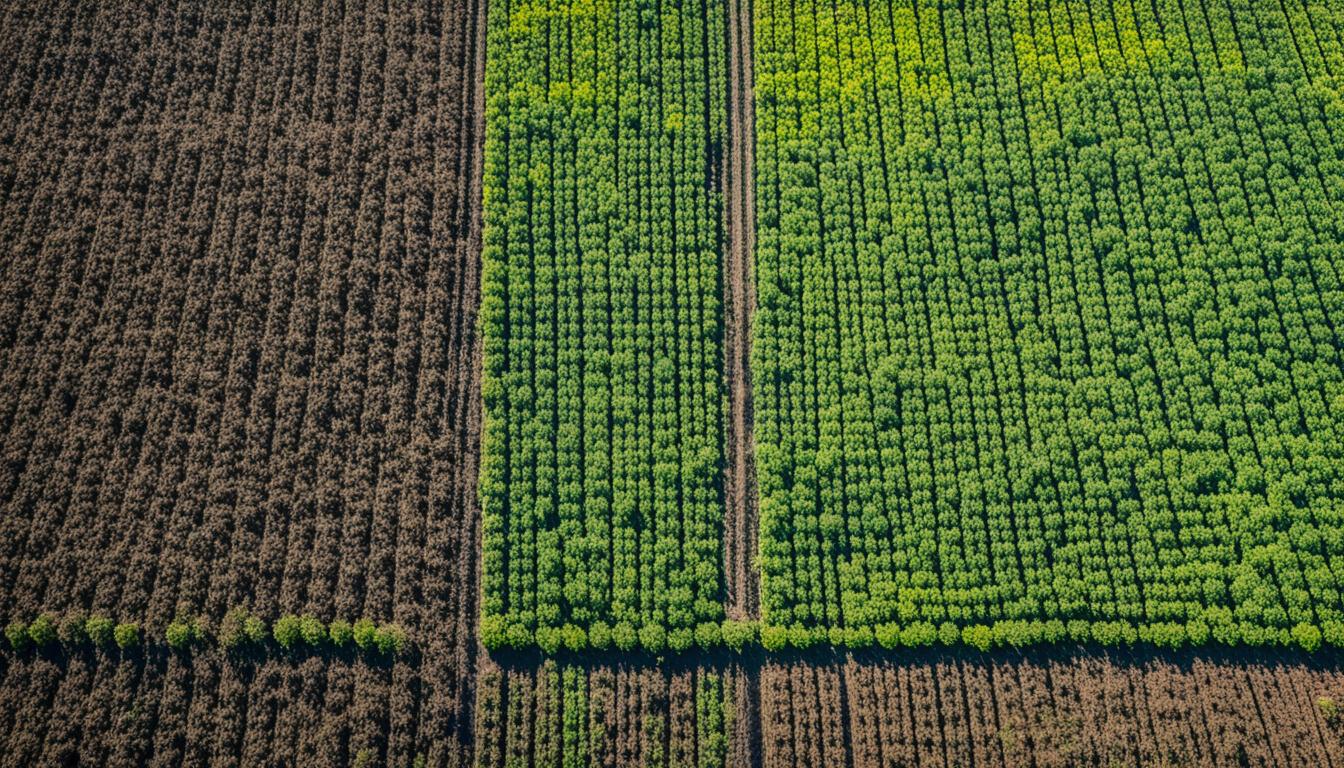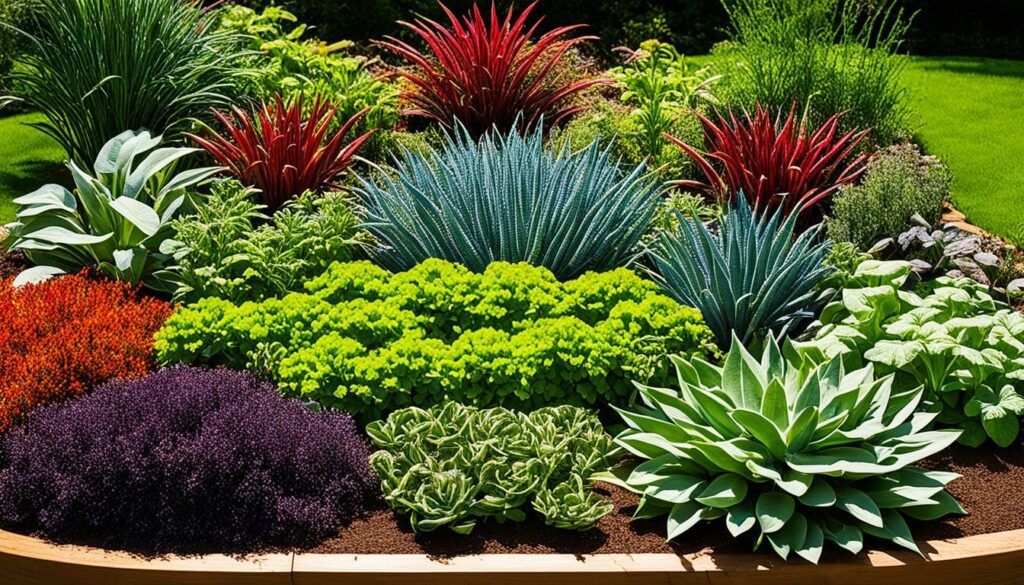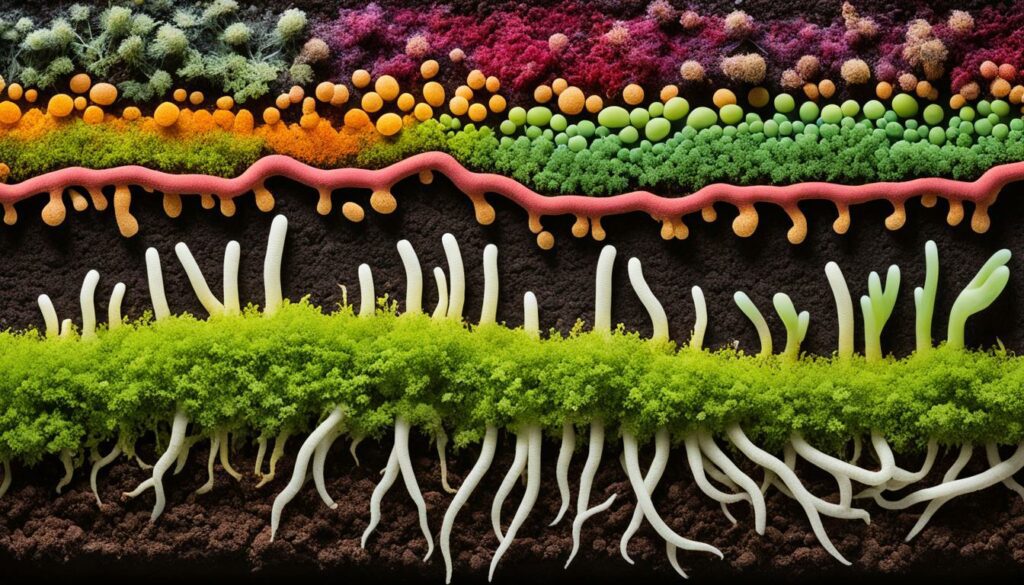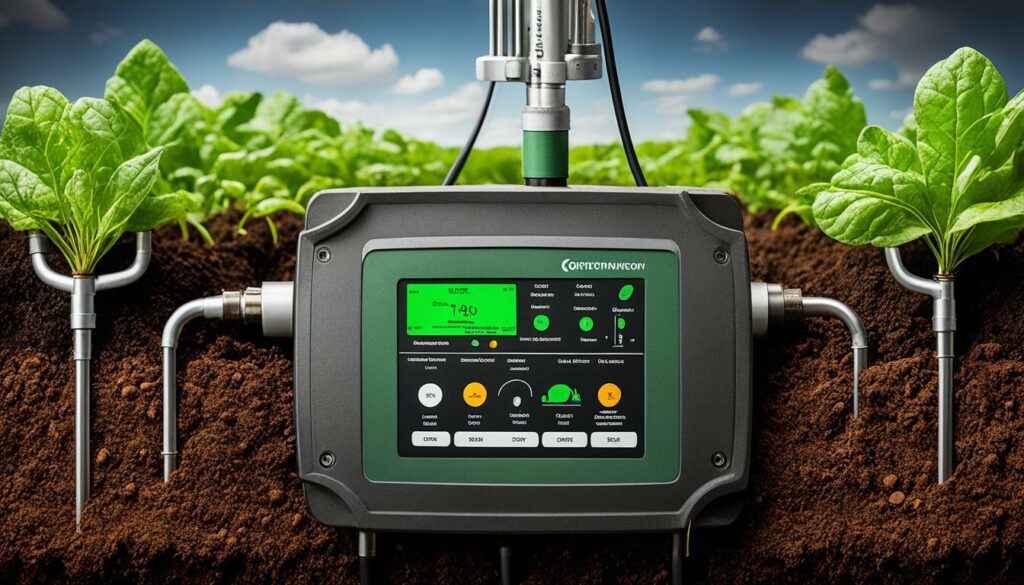Menu

“To forget how to dig the earth and to tend the soil is to forget ourselves.” — Mahatma Gandhi.
Soil nutrient monitoring solutions are now crucial for sustainable farming. They change how we farm. These technologies, like those from Ignite Shield, give us real-time info about the soil. This includes details on Nitrogen, Phosphorous, and Potassium (NPK). Knowing these details helps to grow plants better and boosts farm output.
At the heart of this change are smart soil sensors. They track soil moisture and nutrients all the time. Farmers can check this info on their phones or computers from anywhere. This kind of farming, known as precision agriculture, uses resources better. It cuts costs and lessens harm to the environment.
Monitoring soil moisture and nutrients is key in farming. It greatly helps with plant growth and health. Ignite Shield’s solutions focus on keeping soil nutrients in balance. This boosts growth, saves water, and fights off diseases. Knowing the right nutrient mix is critical. It can stop you from losing crops, which shows monitoring’s true value.
Soil nutrients are vital for plants. They aid in photosynthesis and creating energy. Growers should check their soil before planting. This helps them fix any missing nutrients, wrong pH, or too much salt. Testing throughout the season is crucial. It makes sure crops get all they need. This leads to better harvests and healthy plants.
Wrong soil nutrients harm crop growth. Testing media using various methods shows us what plants get. But the data can be complex. Regular checks on media’s pH and EC are needed. This keeps soil just right. Properly checking pH and EC tools is a must. It stops bad nutrients from hurting crops. Having a solid nutrient plan is vital for good farming.
| Testing Method | Purpose | Recommended for |
|---|---|---|
| 1:2 Dilution | Checking pH and nutrient levels | General use |
| Saturated Media Extract (SME) | Advanced nutrient analysis | Larger operations like commercial and university labs |
| Leachate Pour Thru | Monitoring soluble salts | Routine checks |
Regularly checking nutrients boosts crop yield and keeps soil healthy. This is vital for farming that lasts.
Knowing about soil nutrients helps plants grow well and increases crop yield. There are three types: primary, secondary, and micronutrients. They are all important for plant health.
The most important nutrients for plants are nitrogen, phosphorus, and potassium, known as NPK. Nitrogen is key for making chlorophyll and proteins. Phosphorus helps with photosynthesis and root growth. Potassium boosts disease resistance and moves water and nutrients in plants.
It’s vital to check the soil’s nutrients to ensure plants grow strong and make lots of food.
Plants also need calcium, magnesium, and sulfur, which are secondary nutrients, for good health. These help with important plant processes. For example, calcium builds strong cell walls, magnesium is needed for chlorophyll, and sulfur helps make some amino acids.
Even though plants need only a small amount, micronutrients are just as crucial. Iron, manganese, zinc, copper, molybdenum, boron, and chlorine support enzymes, help plants use nutrients, and fight off diseases. Balancing all these nutrients is key for plant health and big harvests. It’s crucial to test the soil regularly to make sure plants get what they need.

Keeping the right levels of soil nutrients is important for plant health. Using the 4R Nutrient Stewardship System ensures that plants get the nutrients they need without harming the environment. This approach focuses on using the right type and amount of fertilizer at the best time and place.
In the world of precision farming, smart soil sensors stand out. They help farmers keep a close eye on soil health. This real-time look allows for quick action to boost crop growth and save resources.
These systems check key factors for plant growth, like soil temperature and moisture. They also look at nutrients and light levels. By giving precise data, farmers can decide when to water or add fertiliser more wisely.
IoT sensors, for example, place probes at different soil depths to check temperatures. This helps create perfect conditions for each crop.
Smart soil sensors are great at managing nutrients better. They let farmers keep checking the soil’s health. This real-time look helps in making smart choices about feeding and watering the plants.
They work with wireless tech like LoRaWAN and 4G. This means they can be used from urban to remote fields.
These sensors combine soil moisture data with weather info. This provides a full picture of the soil. Keeping nutrient levels perfect boosts crop growth and helps the farm stay green.
“Smart soil sensor systems are transforming the agricultural landscape by providing real-time soil health analysis, leading to more efficient and sustainable farming practices.”
Also, tools like EarthScout’s Irrigation App are a great help. They cut costs for irrigation, showing big payoffs. Bert Bouwman and his son saved half on irrigation in just one year using it.
Soil nutrient monitoring is becoming a key part of precision agriculture. It aims to make farming more efficient and less damaging to the environment. This change is helping us use our resources better and save money.
Precision agriculture helps us fertilise soil more precisely. Now, we’re looking closely at how nutrients, like phosphorus and potassium, affect crop yields. We’re also trying out new ways to apply fertiliser that match the needs of different parts of a field better.
Different soil areas need different nutrients. The soil’s type and past farming affect this.

Old methods of testing soil couldn’t keep up with these details. They were either too expensive or not very helpful. But, testing by soil type has been a good alternative.
In some cases, using different amounts of fertiliser doesn’t boost crop results. This is true especially if the crop doesn’t need extra nutrients. This careful approach is more cost-effective.
Monitoring soil nutrients also has big benefits for the planet. Technologies like GPS and computer mapping help farmers use resources wisely. They cut back on waste and boost crop growth while protecting the environment.
This smart use of technology and old farming knowledge is key. It aims to meet the big challenge of feeding more people without harming the Earth.
This approach is vital for the future of farming. It concentrates on being efficient, saving money, and protecting our planet.
| Method | Traditional | Modern |
|---|---|---|
| Nitrogen Detection | Kjeldahl Method | NIR Spectroscopy |
| Phosphorus Detection | Molybdate Method | HPLC and GC |
| Monitoring Tools | Intensive Grid Sampling | NP Monitoring Sensors |
We’re moving towards modern ways to keep track of soil nutrients. This shows our commitment to doing farming better. We want to be more efficient, save money, and look after the environment.
Modern agriculture has seen big advancements with new soil analysis techniques. These methods help farmers make better decisions. By providing accurate soil data, they enable tests that check soil health.
We will look at some important studies and methods in advanced soil analysis:
These studies show how soil fertility testing can boost farm production. They set the base for improving how well crops grow:
| Method | Study/Author | Key Focus |
|---|---|---|
| Capacitance Sensors | Evett and Cepuder (2008) | Soil Water Content Estimation |
| Impedance Measuring Technique | Gaskin and Miller (1996) | Soil Water Content Measurement |
| Granular Matrix Sensors | Irmak et al. (2016) | Soil Water Status |
| Amplitude Domain Reflectometry | Nakashima et al. (1998) | Soil Water Content Measurement |
| Field Devices for Soil Water | Munoz-Carpena (2004) | Soil Water Content Measurement |
| Irrigation Management | Sharma (2018) | Soil Water Basics |
| Electromagnetic Methods | Topp et al. (1980) | Soil Water Content Determination |
| Soil Moisture by Feel | USDA-NRCS (1998) | Soil Moisture Estimation |
New advanced soil analysis methods are not just for farmers. They help agribusinesses, banks, and others too. By testing soil for things like chemicals, pH level, and what living in the soil, we make smarter choices. This helps farming be more sustainable and efficient.
Farmers use soil testing to learn about their soil’s health. It tells them about the nutrients it lacks and how well their plans are working. In Maine, a standard test checks for main nutrients like phosphorus and potassium. It also looks at the acidity, organic matter, and more.

Nitrogen tests are key but are best done during the growing season. Farmers can ask for extra tests like checking for certain salts. Knowing these details helps farmers improve how they manage nutrients.
Soil health is vital, but it’s not the only thing affecting plant growth. Pests, diseases, and the environment play a big role too. However, fixing nutrient problems through tests and the right steps can boost soil and farm productivity.
Local conditions influence soil advice. In Maine, advice is fine-tuned using local research. This makes sure plans to manage nutrients are spot on.
Knowing and adjusting soil pH is also important. Liming, which adds calcium to the soil, helps a lot. It makes the soil structure better and can change how farmers manage nutrients in the future.
Soil tests are a powerful tool for farmers. They show what’s needed for healthy soil and plants. The right use of these findings leads to sustainable, successful farming.
Good soil sampling is key for good farming. It helps apply the right amount of nutrients to crops. This affects how much the crops produce and helps the earth stay healthy. We need to follow some rules to do this right.
Getting the right soil sample means taking 15 to 20 cores in the same way across a field. A soil probe with a half to one-inch tube is best. For the top 6 inches, we test for things like organic matter. For deeper samples, nutrients like nitrate-nitrogen are checked. It’s crucial to test to at least 24 inches deep for a full look at the soil.
Samples should be air-dried or frozen if you can’t test them right away. Each bag must be labelled well. They should be sent to a lab in a strong container. You usually get the results in 5 to 10 days. These results are really important for understanding your soil.
When you take your samples is very important. For example, testing for nitrate-nitrogen should be done before planting the year. Some nutrients need checking every 2-4 years. The timing should match your crop’s needs. The kind of farming you do also affects how deep you should sample.
Using composite samples is often better. They mix 10 to 20 little samples into one. This gives a better picture of the field’s health. Taking samples from different places in a field shows its true condition. This helps in deciding what the field needs for better growth and health.
Today, farming without data-driven decisions is hard to imagine. The use of advanced tech allows us to gather and study important data. This data greatly affects the success of our crops.

Soil data is key in making smart farming choices. It tells us about the soil’s texture, structure, and more. Devices connected to the IoT give up-to-the-minute data, helping us deeply understand the land.
Predictive analytics, using past data and modern maths, lets us predict crop yields better. Algorithms like linear regression and SVM make these forecasts even more precise.
After we gather and study soil data, it’s time to use this knowledge. We create plans to grow crops effectively while reducing risks. These risks include bad weather, pests, and market changes.
By using data analysis methods, like statistical modelling, we can spot risks early and plan how to avoid them.
| Category of Agricultural Data | Examples | Application in Crop Management |
|---|---|---|
| Weather | Temperature, Precipitation, Humidity | Predictive analysis for optimal planting dates |
| Soil | pH Level, Nutrient Availability, Texture | Determining fertiliser requirements |
| Crop | Yield Monitoring, Crop Health | Stress identification and health assessments |
Data-driven choices improve how we manage our crops. This boosts harvests and keeps the land healthy. By using detailed soil data and acting on our analyses, we help farming meet sustainability goals.
Soil monitoring tech is changing fast. It’s using tools like IoT sensors and aerial images. These new tools mean better and quicker soil health checks. They help farmers and the agriculture world a lot.
IoT-enabled sensors are a big step forward in soil monitoring. These sensors, developed by startups, give live updates on moisture, temperature, and soil contents. For example, Farmsys made the Soil Spectra sensor. It measures things like nitrogen levels and pH. It also checks local weather. This data helps farmers make smarter choices about water use and fertilisers.
Aerial imaging is making field checks easier for farmers. Drones take detailed pictures, showing soil and crop conditions well. TerraRad uses drones for quick, effective soil checks. This helps decide the best places for farming actions. Soil mapping is also key. It helps farmers see soil differences in their lands. This leads to more precise farming.
Looking at 535 startups, we see big trends for 2023. These trends range from soil sensors to more advanced robotics. They’re all about making farming better and more sustainable. The US, India, and Western Europe are leading the way. These new ideas will change how we look after soil.
Soil life is key for keeping nutrient levels right. It helps our environment be healthy and our crops grow well. A small amount of topsoil can hold as many as 6 billion tiny organisms. These organisms help with recycling nutrients and keep the soil firm.

Looking into soil biodiversity helps us see the links between different soil organisms. Many types of bacteria, fungi, and nematodes are important. They help plants get nutrients by breaking down old plant and animal material. The UN’s Food and Agriculture Organization says soil life is worth more than US$1542 billion. This shows its value to nature and the economy.
Soils decide what nutrients plants can use, like nitrogen and potassium. They also filter out which plants can grow, based on the soil’s texture and chemistry. This affects why some plants do well in certain places and others don’t.
Farming methods like changing crops each season and not digging up soil too much are good for soil life. Areas where animals graze tend to have richer soil life than places where crops are always the same. But, farms can do better if they add certain nutrients to the soil to help these tiny life forms. This is all about keeping the soil healthy by how we use it.
Too much of certain nutrients can actually make soil life less varied. This is a problem because a rich variety of tiny life is good for the soil. People have thrown off the balance of nature by adding too many nutrients. For example, there is now more phosphorus in the soil than the plants can use. This is damaging to the environment.
It’s important to care for our soil better by not digging it up so hard, using it wisely, and fixing any damage. There are also actions at a state level, like in New South Wales, which support making land productive without hurting biodiversity. These steps all help us keep our lands productive for many years to come.
| Soil Management Practices | Impact on Soil Biodiversity |
|---|---|
| Crop Rotation | Increases soil stability and microbial diversity |
| Reduced Tillage | Enhances soil structure and biodiversity |
| Grazing Systems | Higher soil biodiversity with diverse plant species |
| Cropping Systems | Typically low biodiversity, can be improved with carbon and nitrogen inputs |
| Fertiliser Management | Increases nutrient availability but can reduce microbial diversity |
It’s vital to use the right tools to check our soil life. This helps us take better care of our soil. By knowing and looking after the life in the soil, we make sure we can keep growing food in a healthy way.
Soil nutrient monitoring is seeing big changes that will impact how we manage soil health. A study looked at 535 companies to see the latest in soil monitoring. This helps us understand where the field is headed.
In 2023, important soil monitoring trends have emerged. These are:
These trends help make soil health management more accurate and efficient. They tackle challenges in farming over the short and long term.
New technologies are changing how we look at soil. They provide deep insights that we can act on:
These soil analysis upgrades do more than just improve how accurate we are. They lead to more sustainable farming by giving better data and real-time checks.
By 2030, the global soil monitoring market could hit USD 1598.78 million. The market is growing at a rate of 13.9% every year from 2022 to 2030. This growth shows how important new technologies and ideas are in managing soil health.
Testing soil nutrients and keeping an eye on the environment are key in farming today. They give farmers important info to grow crops well. One way is to take soil samples from the whole field and then analyse them as a mix. This easy method has a drawback. It can sometimes mean using too much or too little fertiliser in different areas, which could lower the farm’s harvest.
Grid sampling breaks the field into smaller parts, taking a sample from each part. This creates a map showing where more nutrients are needed. But it can be expensive for big farms. The management unit method combines detailed data with less cost. It’s better than sampling the whole field but not as pricey as grid sampling. This method lets farmers apply just the right amount of nutrients in different areas of their fields.

Farms are divided into management units based on the soil and the farmer’s aims. This makes it easier to control nutrients. By doing this, the farmer can improve their harvest and keep costs down. The goal is to make these management zones more consistent than the whole field. This is done by looking at a few factors that could affect the soil’s health.
The management unit method is good because it lets farmers use nutrients better and save resources. When taking soil samples, farmers should pick a small area that shows what the rest of the field is like. They must also look at the soil’s features and how the field is managed. These help in deciding the management unit areas.
| Sampling Method | Approach | Advantages | Disadvantages |
|---|---|---|---|
| Whole-Field | Composite sampling from entire field | Simple and less time-consuming | May lead to uneven nutrient application |
| Grid Sampling | Field divided into cells, each sampled | Detailed nutrient map | Costly, especially for larger farms |
| Management Unit | Field divided into units based on characteristics | Optimised nutrient application, cost-effective | Requires detailed field knowledge |
Today, soil nutrient monitoring uses many new technologies. These include things like Near Infrared Spectroscopy and sensors made from graphene foam. There’s also work on using titanium nitride for sensors. This tech helps to keep an eye on important soil nutrients such as nitrate, carbon, and others.
Small sensors and devices like nitrate ion-selective electrodes are also used. They help in monitoring soil nutrients right on the spot. This supports precision farming and fast checks on soil health. Studies show that some of the new methods, such as near-infrared spectroscopy, give very clear info on soil nutrients.
So, a good soil nutrient monitoring system is important. It helps farmers grow better crops without harming the soil. Using new tech in farming ensures that we use resources wisely. It also helps to keep farms running well.
Checking soil nutrients is crucial for farming the right way. But, there are obstacles. Getting the right tools and paying for them can stop many from doing it. We need to work on making things better for looking after land and nature.
Getting the right data from the soil is hard but important. Actions like soil getting packed tightly make the readings wrong. This makes it tough for plants to spread their roots and grow well. New tech, such as sensors that talk to the internet, can help a lot. They give us up-to-the-minute facts on the soil. This includes its temperature, moisture, and what nutrients are there.
Good soil monitoring tools can be very pricey. This keeps many farmers from using them. But, there are cheaper options out there that work well. Companies are creating sensors that don’t cost as much. These sensors can do more than just check the soil’s health. They tell you about the weather and other environmental facts. This makes keeping the soil healthy easier, cheaper, and better for the planet.
It’s key to keep working on better, cheaper soil monitoring tech. By doing so, we help farmers grow more and protect nature for the future.
Soil nutrient monitoring tracks the chemical makeup of soil. It checks if there are enough key nutrients for plants to grow well. Commonly, this includes looking at nitrogen, phosphorus, and potassium levels.
By checking the soil’s status, farmers can apply nutrients accurately. This leads to healthy plants and better harvests. It also means using resources wisely.
Nutrients are plant essentials for growth and function. For example, nitrogen, phosphorus, and potassium are vital for strong plants. Other nutrients help with health and disease fighting.
Imbalanced nutrients can lower harvests and make plants weak. They might also get sick easily. Balancing nutrients well is key to successful farming.
Main soil nutrients are nitrogen, phosphorus, and potassium (NPK). Plants need these in big amounts for good growth. They’re basics for healthy soil.
Smaller amounts of secondary and micronutrients are critical too. They help with many plant functions and overall growth. This includes calcium, magnesium, and others.
Smart sensors give instant data on soil moisture and nutrients. This allows for quick, smart choices in watering and feeding plants. It improves harvests and saves resources.
Constant data updates let farmers tweak nutrient plans right away. This means using fertilisers better, less waste, and sustainable farming.
With monitoring, precision farming uses resources wisely and saves money. It’s good for the environment too. Accurate soil info leads to the best crop care.
Advanced soil analysis gives detailed insights into soil health. It’s key for making smart farming choices.
These methods help manage nutrients right for strong plants.
Fertility tests look at soil nutrient levels for healthy plants. This is vital for planning the best nutrition for crops. It ensures they get what they need for growth.
Good soil sampling involves the right tools, correct depth, and varied locations. This gives a true picture of the soil’s health. Proper timing and regular checks are also important for accurate results.
Data helps farmers plan the best care for their crops. It leads to using nutrients in the right way and higher yields. It makes farming more efficient.
IoT sensors keep an eye on soil constantly. They share data online for informed farming decisions.
With this info, farmers can take quick, smart actions.
These technologies check large areas for soil issues. They help spot problems like erosion or lack of nutrients.
Farmers can then care for their land better.
Soil’s living things help keep nutrient levels right and the soil healthy. A varied ecosystem means better soil and more crops.
In 2023, soil sensing, robotics, and blockchain will lead monitoring.
These new ways aim for better soil care and sustainable farms.
New soil tech includes IoT sensors, better imaging, mapping tools, and blockchain use.
These help farmers watch soil health more closely for better care.
Challenges include being precise, cost, and always getting better tools. Overcoming these is vital for the Earth and farming to prosper.
To be more accurate, use the latest tech and check tools often. Also, follow the best ways to sample soil. Improving is all about constant learning and better tools.
High costs can be lessened by investing in research and sharing costs through government help. Working together, we can make technology more affordable.